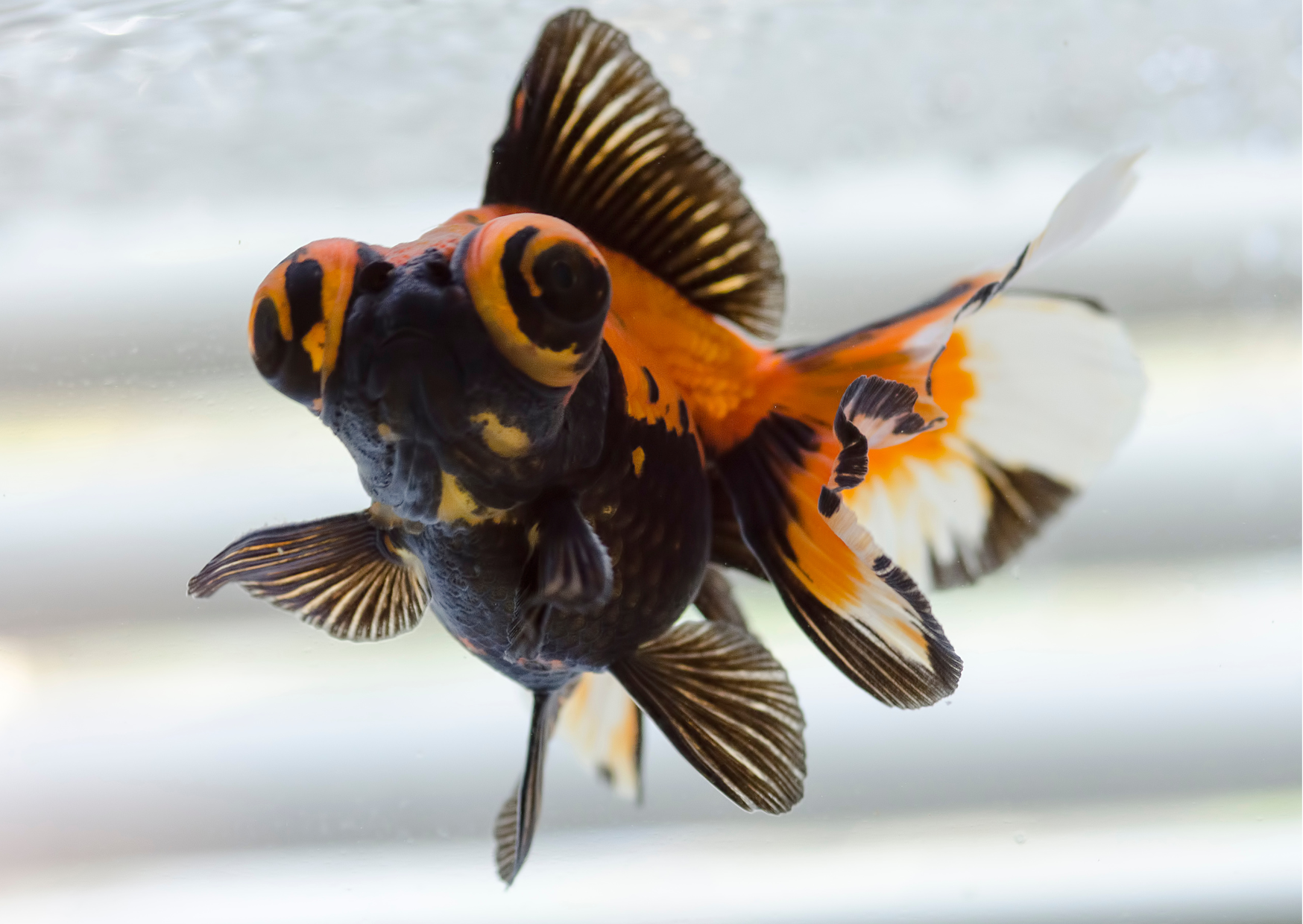Next working day delivery with Royal Mail Tracked 24
Fish Profiles | Butterfly Moor Goldfish

Fish Profiles | Butterfly Moor Goldfish
There are many different types of fancy goldfish, one popular variety is the moor goldfish. Butterfly moors, and other varieties of the species, have distinctive bubble-eyes, or protruding telescopic eyes, on the side of its head.
Butterfly Moor goldfish have a more speckled colouring often combining black, orange and white with a tail fin reminiscent of a butterfly wing. They are one of the most popular varieties of the species and a great companion to other Fancy Goldfish. They are social animals so best kept in groups in a large cold water or temperate aquarium. Butterfly Moor's are also quite messy so powerful filtration and regular water changes are recommended.
Butterfly moor's make peaceful additions to community freshwater tanks with other goldfish or low-temperature tolerant tropical fish of a similar size. They are relatively easy to keep healthy if the tank is clean, well filtered, and they are fed a good diet. This makes them suitable for beginners.

How big do Butterfly Moor goldfish get?
A fully grown moor goldfish usually reaches 15-20cm, around 6-8" inches in length. Care must be taken not to house with smaller fish that can fit in its mouth, when it reaches adult size - butterfly moor goldfish will happily swallow small tetra or similar tankmates.
Can you keep Butterfly Moor goldfish in an outdoor pond?
Butterfly moor goldfish, like many fancy goldfish, will thrive in temperatures above 16 degrees, which makes them unsuitable for ponds during cold autumn and winter seasons. Many aquarists keep fancy goldfish like Butterfly moor's in outdoor or indoor ponds during the summer, and transfer them indoors to an aquarium during the winter months.
Features
Typical size in store: 2-3" / 5-7cm
Maximum size: 6-8" / 15-20cm
Origin: China
Family: Cyprinidae
Temperament: Peaceful
Lighting requirement: Low
Ideal number kept together: 1+
Water conditions
Ideal pH: 6.8–8.0
Water flow: low to moderate
Ideal temperature: 16-28°C
Ease of care
It is generally wise to allow at least 30 litres of water per Fancy Goldfish. They can produce a lot of waste, so an adequate filter and pump are needed to keep their habitat clean. Butterfly Moor's have been known to eat plants, but you can use plastic plants instead for decoration. Goldfish, in fact any fish, must never be kept in an unfiltered tank.
Special care should be given to the eyes because they are prone to bacterial infections, so avoid sharp-edge ornaments or scratchy plants. Being a slow-swimmer, take care to ensure these goldfish are not out-competed for food if kept with fast swimming fish. Feed them a meaty treat, such as bloodworm, with tweezers to ensure they get the nutrition needed to grow.
Compatibility
Fancy moor goldfish are compatible with virtually all community goldfish. As they grow, care must be taken not to house with smaller fish that they may be able to fit in their mouth. Mixing Butterfly Moor's with Black and Butterfly Moor's, Ryukin, Fantails, Oranda or Pearlscale goldfish is ideal and makes for a great display.
Butterfly moor's are slow swimmers, non-competitive at feeding and very friendly, making them the perfect community tank fish. Black moor goldfish are not a schooling fish but will feel comfortable in a tank with a number of their own species.
Diet
Butterfly moor's are omnivorous. Feed them sinking and floating goldfish pellets flake and broken-up algae wafer. Will also happily eat bloodworm, brine shrimp and other meaty fresh food (frozen is fine).
Breeding
Moor goldfish are egg layers. Goldfish typically spawn in late spring to early summer in temperate regions. In indoor aquaria you are likely to succeed if you give them a cooler period simulating winter, followed by a gradual warming up to imitate the seasons changing.
Life Span
Butterfly moor goldfish can live up to 10-15 years in perfect aquarium conditions.
To browse our range of goldfish food online please click here.
To browse our range of aquariums for red moor goldfish please click here.
Photo credit(s): Canva Pro Licence






